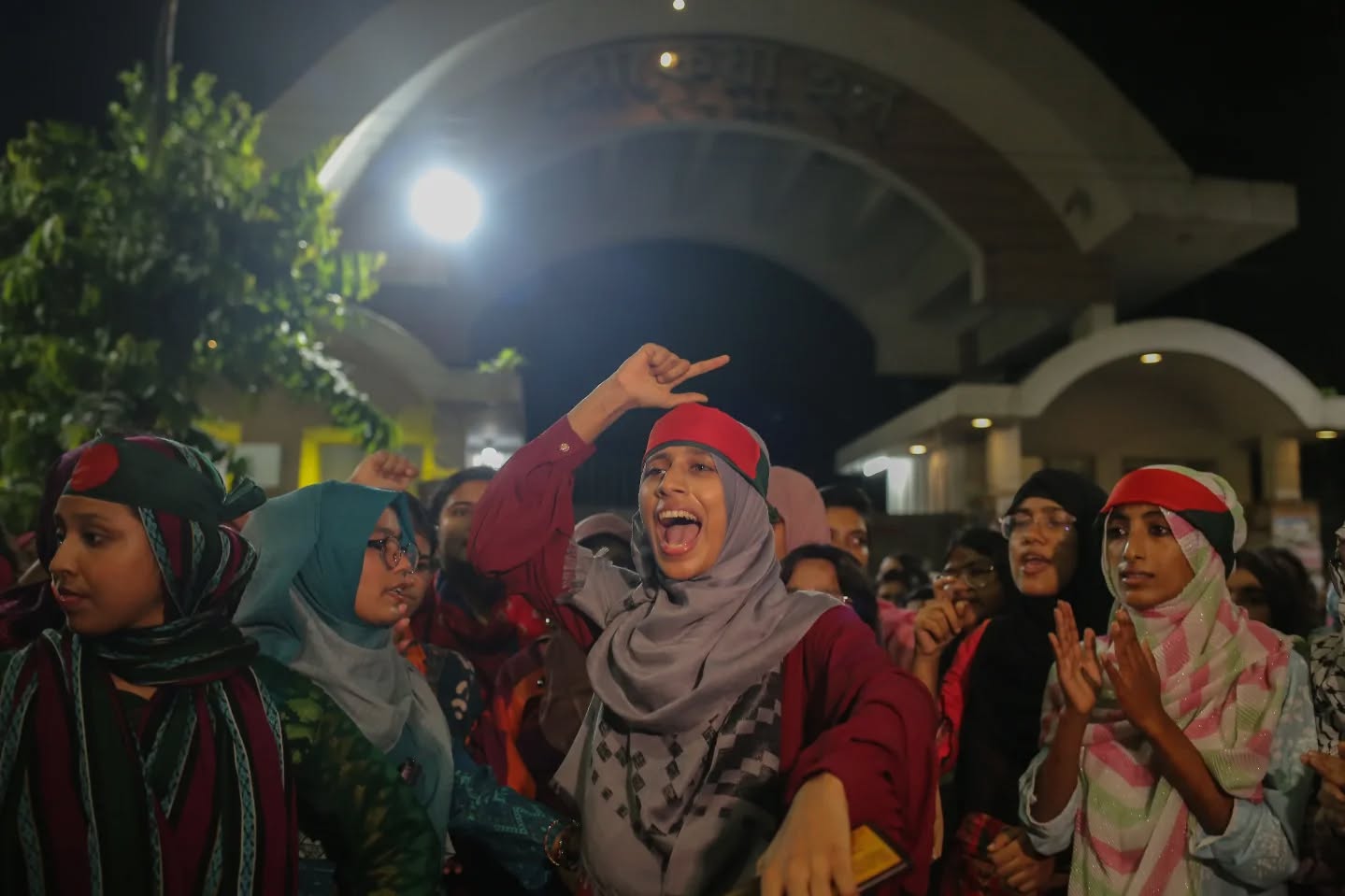On the evening of August 2 last year, Mahin Sarker’s voice crackled through a WhatsApp message that quickly spread across university dorms, student halls, and living rooms across Bangladesh.
It wasn’t just an announcement—it was a call to action. A nationwide demonstration was set for the next day, and from August 4, a non-cooperation movement would begin.
Behind the urgency of the message lay a deeply human wound: the deaths of young protesters, including children, during a student-led movement demanding reforms to the country’s controversial quota system.
Across Bangladesh, especially in the days leading up to August 3, the streets filled with parents, students, teachers, writers, and artists—each carrying placards and pain. The slogans echoed loudly: “Step Down Hasina,” “Chhatro Hottar Bichar Chai,” and “Bullets May Hit, But We Won’t Quit.”
The protests were not only about policy anymore—they had become about lost lives.
Among those who marched were people like Nusrat Tabassum and Hasnat Abdullah, student leaders who had just been released from the Detective Branch’s custody. They claimed they were detained unlawfully, kept away from their families, and even forced to make statements against their will. In protest, they began a hunger strike while in custody, though their families never knew.
On August 2, just a day before the mass demonstration, violence erupted again. At least two people were killed—one a day laborer in Habiganj, another a policeman in Khulna. Over 150 were injured in clashes between protesters and police backed by ruling party supporters.
In Dhaka’s Uttara-11, rubber bullets injured at least three people. In Mirpur, Shahbagh, and Aftabnagar, protesters blocked roads, chanting for justice and demanding the resignation of the then Sheikh Hasina-led government.
Despite rain and rising tensions, the capital saw one of its largest protest processions—“Droho Jatra”—starting from the Jatiya Press Club and ending at the Central Shaheed Minar. Thousands walked, weeping mothers and chanting students side by side. Former professor Anu Muhammad stood before the crowd, lending his voice to the grief and resistance swelling in the streets.
Beyond the capital, the fire of resistance had spread. Students in Chattogram, Sylhet, Noakhali, and Narsingdi marched with portraits of the dead. Teachers and writers formed their own protest groups. Doctors and medical students gathered in white coats, calling not only for reform but for accountability. Even BRAC University saw 626 of its faculty members publicly declare their solidarity.
But perhaps the most sobering response came from outside Bangladesh. In a rare and emotional statement, UNICEF’s Regional Director for South Asia, Sanjay Wijesekera, confirmed that at least 32 children had died in July’s protests.
“This is a terrible loss,” he said. “UNICEF condemns all acts of violence.” The numbers were staggering—more than 200 people killed, many more injured or detained. Over 10,000 arrests were made between July 16 and August 2 during a sweeping combing operation targeting student activists and political opposition members.
And yet, even as the human toll mounted, political narratives continued. On the same day the nation grieved its young, Awami League General Secretary Obaidul Quader reiterated that the students’ demands had been met and blamed a “vested quarter” for manipulating the unrest.
But for families like Tahmid’s, it was never about politics.
Tahmid’s father, Rafiqul Islam Bhuiyan, a village physician, said quietly, “The administration wanted me to agree to an autopsy. But what would that change? I saw what they did to my boy. I just wanted to take him home.”
In a courtyard in Narsingdi, a hospital stretcher still lies under a tree—the same one that carried Tahmid home for the last time. It has not been returned. The family, like many others across the country, remains suspended in grief, still searching for justice, still waiting for answers.
For them, and for many across Bangladesh, the student protest of 2024 was not a political campaign. It was a collective cry of pain—a movement powered not by ideology, but by heartbreak.


